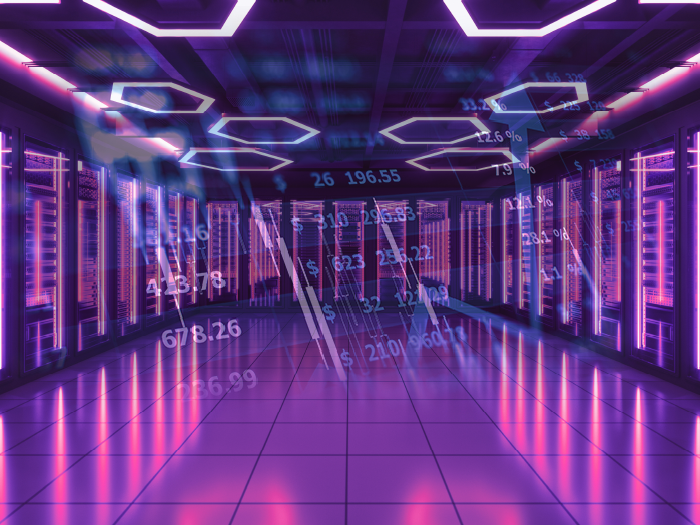News
better business decisions
Posted 1 year ago | 8 minute read

What does NPRR1186 mean for FTM batteries?
NPRR1186 (Improvements Prior to the RTC+B Project for Better ESR State of Charge Awareness, Accounting, and Monitoring) passed on April 12 2024, with revisions compared to the original proposal. But what does this mean for batteries operating in ERCOT?
Background
Originally tabled in June 2023, NPRR1186 was the first of two rule changes that ERCOT prepared to improve the awareness, accounting, and monitoring of the State of Charge (SoC) for an energy storage resource.
Owing to the sharp increase of battery-related projects in ERCOT’s interconnection queue, under the original proposal, resources would have been obligated to default on their ancillary service awards or even lose their ancillary service qualification if their telemetered SoC was less than the required amount (for generation side ancillary services) or more than the required threshold for the awarded regulation down service.
The purpose of the second NPRR (NPRR1204, Considerations of State of Charge with Real-Time Co-Optimization Implementation) is to implement similar improvements in the awareness, accounting and monitoring of the SoC for energy storage, along with the other features of the RTC+B project and specifically the Single-Model ESR implementation.
This particular NPRR is for the interim period, which is described as the time period before the RTC+B project goes live. The target go-live date for the RTC+B project is expected to be several years away and changes in this first NPRR are aimed to strategically improve SoC awareness, accounting, and monitoring with minimal system changes so that the improvements can be in place while the RTC+B project is completed.
RTC+B Project
RTC+B is an ongoing ERCOT workstream that aims to implement real-time co-optimization to make ERCOT energy procurement and dispatch more efficient. However, the RTC is not expected to be implemented until December 31, 2026.
Approved rule change
While this NPRR does not specify that ERCOT manage the SoC for an energy storage resource, it does specify that existing and new information be provided so that ERCOT can better understand current energy capability and expected energy capability in future hours.
The approved NPRR:
- Adds definitions and telemetry requirements related to SoC information and introduces the requirement for a Qualified Scheduling Entity (QSE) representing an storage unit to telemeter a new quantity representing the next Operating Hour’s Ancillary Service Resource Responsibility for the storage asset. The target SoC will be reported via Current Operating Plans (COPs). More on this below.
- Introduces the requirement for a QSE to complete three new values in the Current Operating Plan (COP), including the Hour Beginning Planned SoC, Minimum State of Charge (Min SoC), and Maximum State of Charge (Max SoC).
- Specifies how the Hour Beginning Planned SoC values provided by a QSE through COP submittals will be accounted for in Reliability Unit Commitment (RUC) studies. The target SoC will be used to calculate if resources are long or short in RUC settlements.
- For Real-Time, High Ancillary Service Limit calculations are modified to account for SoC required to support an asset’s Ancillary Service Resource Responsibility.
- Clarifies that Non-Frequency Responsive Capacity (NFRC) will be accounted for in the HASL calculation when Responsive Reserve (RRS) responsibility is non-zero
The most important change in the approved NPRR relative to the original proposal is that power storage assets will not be financially penalized if they violate the SoC requirements associated with the ancillary service obligations they carry. There may be negative financial ramification due to carrying negative HASL during scarcity events or after the RUC process. Should generating resources not be in compliance, they will not be accepted in Security-Constrained Economic Dispatch (SCED) for discharging. Similarly, controllable load resources will not be accepted in SCED for charging if the SoC gets higher than the amount permissible.
The 1186 NPRR dictates the amount of charge a project carries should linearly decrease as the time goes by in an hour (from 100% at the top of the hour, to (60-m)/60% at minute m). Note that this limitation is not looking 60 min forward all the time, but from minute m to the end of the hour.
The required SoC to carry at the start of the hour is the following:
- for ERCOT Contingency Reserve Service (ECRS), Responsive Reserve (RRS) and Regulation Up (RegUp) one hour of continuous discharge at the start of the hour,
- for Fast Frequency Response (FFR), it is 15minutes of continuous discharge,
- for Regulation Down (RegDown), one hour of continuous charge.
Impacts
Under the new regulation, batteries with 5MW of Ancillary Service duty must maintain a minimum state of charge equivalent to their output for the operating hour. For instance, if a battery has a 5MW responsibility, it must start with at least 5MWh of charge and maintain 2.5MWh halfway through the hour to sustain the output. ERCOT notifies storage providers of these requirements based on their current responsibilities and the remaining time in the hour. This calculation applies inversely for services aimed at reducing frequency.
Consider a 100MW battery contracted for 90MW of Responsive Reserve Service (RRS) over two hours, from 12:00 to 14:00.
- First Hour (12:00 – 13:00) – At the start, the battery holds at least 90MWh. With stable grid conditions the battery experiences minimal reserve service usage and, throughout the hour, it discharges occasionally, dropping its charge below the required level. It meets its updated obligations. As this battery also has an obligation for the operating hour beginning at 13:00, the battery restructures its offer curve to receive a charging base point (or dispatch instruction) – so that it has the required state of charge at the beginning of that period. To allow this to happen, ERCOT extends a ‘charging credit’. This means that state of charge requirements are actually lower while the battery charges up, and the battery isn’t punished. (If the Ancillary Service were deployed while the battery was charging, the battery would simply stop charging – and still be partially fulfilling its obligation, by helping frequency)
- Second Hour (13:00 – 14:00) – At 13:00, the required state of charge returns to 90MWh. A frequency event prompts automatic frequency response initially. Following this, RRS is deployed to restore frequency. The battery’s RRS schedule shifts to 0MW, making capacity available for economic dispatch. It receives discharging instructions, reducing its SoC. Rather than restoring this battery’s state of charge to 90MWh, the QSE moves some Ancillary Service Responsibility to another of its resources to avoid needing to charge the battery at an inopportune time. Consequently, RRS responsibility decreases to 50MW by the hour’s end, increasing the available capacity for other services. Since RRS has been recalled and the resource is reserving less of its capacity for Ancillary Services, the HASL increases (essentially, the resource has less of its capacity reserved for providing Ancillary Services).
Bid Optimizer
As renewable energy generation and energy storage play an increasingly vital role in the ERCOT market, the ability to optimize your assets is vital to achieve maximum revenue, while complying with the changing regulatory landscape (including the introduction of NPRR1186). That’s where Bid Optimizer takes center stage.
At the heart of this cutting-edge solution lies a potent AI-powered optimization engine, fortified by Digital Twin simulations. This technological marvel promises to transform energy asset management in ERCOT, equipping decision-makers with unparalleled insights.
The AI-driven optimization platform forecasts forward power prices, conducts simulations to align state of charge management and cycling constraints with revenue maximization while also employing digital twin models to simulate asset performance across various market scenarios. The result? Your business can design and execute the most profitable bidding strategy, elevating profitability.
Key benefits at a glance:
- Precise Forecasting: Leverage AI models to forecast price, demand, and renewable power generation, ensuring you capitalize on all revenue streams.
- Automated Bidding: Utilize Algorithmic Trading to monetize your position across energy markets and ancillary services, round the clock.
- Profitable Strategies: Identify arbitrage opportunities across ERCOT’s markets while balancing your assets, production schedules, and flexibility strategy.
- Maximum Revenue: Enhance your system and financial planning, using AI to help you design, deploy, and optimize your assets.
The solution optimizes asset profitability, site performance (including SoC requirements obligated by NPRR1186), and revenue streams across day-ahead and real-time markets. It forecasts energy prices, demand, and generation for each asset, conducts physics-based simulations to determine the best bidding strategy, and employs Algorithmic Trading to automate the process.
Conclusion
Under NPRR 1186 operations for batteries will become more complex and affect the amount of ancillary service capacity they may offer.
At times when the grid is under stress, NPRR 1186 would not limit the ability of batteries to contribute to stabilizing the grid through Ancillary Services, but, there are some risks for operators. In certain circumstances, the proposed financial punishment ($25,000 per dispatch interval deemed short) could potentially send the wrong signal to batteries, causing them to do the opposite of what the grid theoretically needs during multi-hour scarcity events to avoid fines. During a multi-hour deployment, it could also force resources to charge during highly volatile price periods in instances where a battery operator has obligations across multiple assets and multiple hours.
To successfully navigate the changing regulatory landscape, solutions such as GridBeyond’s Bid Optimizer become critical in ensuring that you are able to stay compliant, profitable and manage the health of your asset into the future.

Bid Optimizer
By leveraging AI, we guarantee optimal bids that go beyond conventional strategies, maximizing your gross margin and overall profit across all forward trading periods. This proven technology empowers merchant generators and energy storage operators by providing them with a strategic advantage in optimizing their energy and ancillary offers, maximizing the profitability of their entire portfolio.
Learn more





